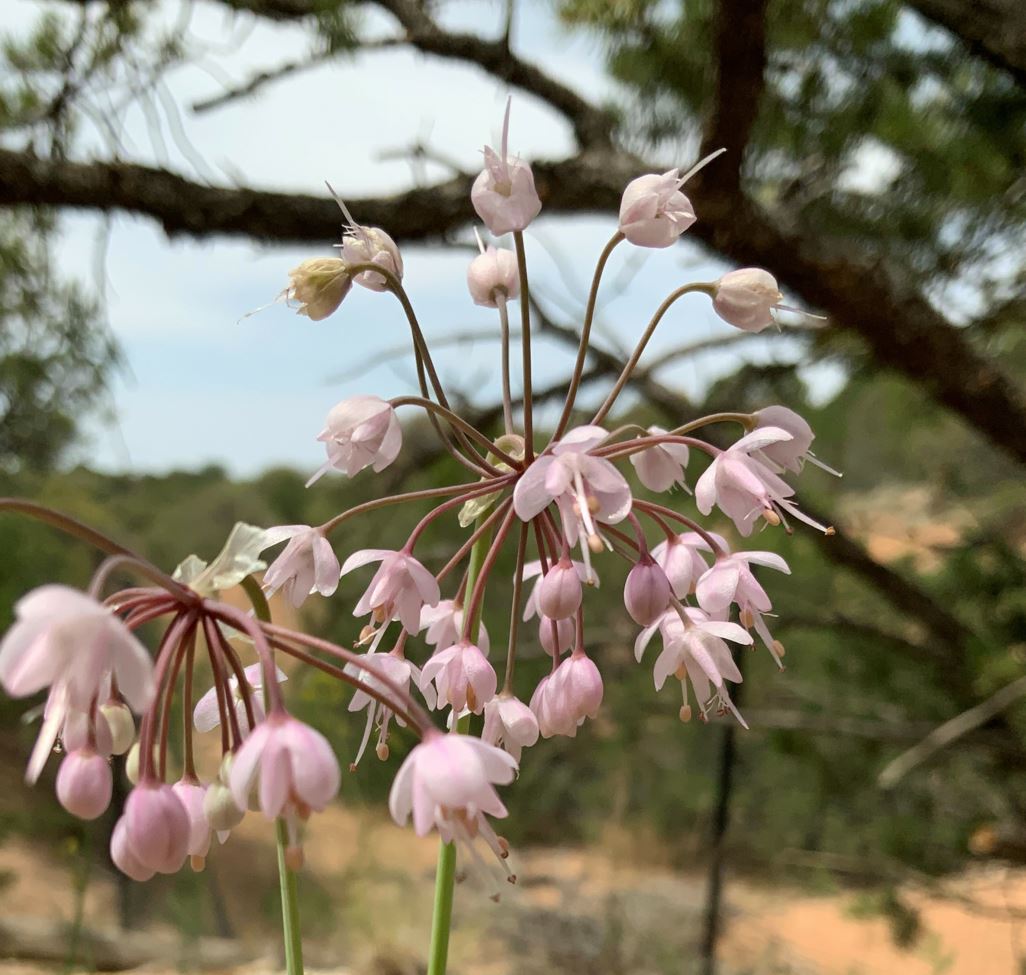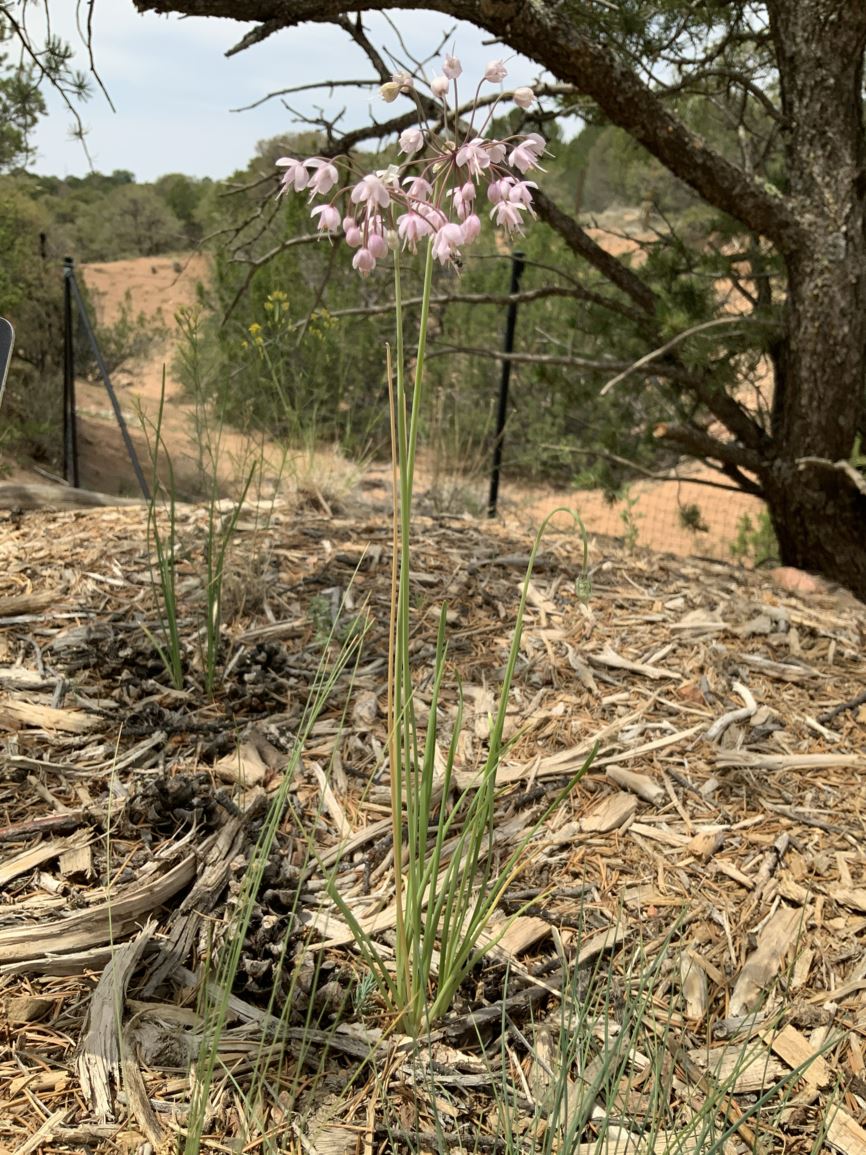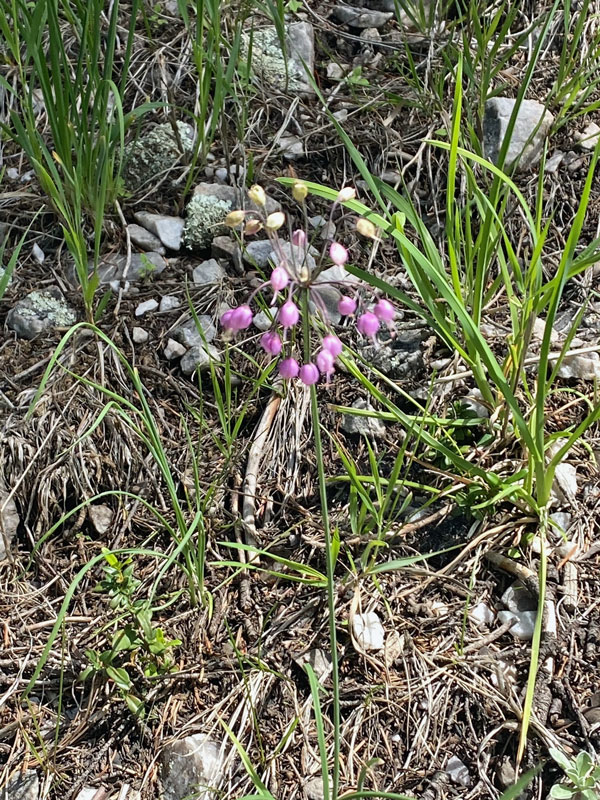Scientific name: Allium cernuum Hort. ex Schult.f.
Common names: nodding onion, ajo-cebolla (Spanish)
Family name: Amaryllidaceae (Amaryllis)
Life form: Geophyte (bulb, corm or tuber)
Bloom time: June to August
Water conditions: Dry to medium, elevations from 2000 – 10 000 feet
Sun: Full sun to part shade
Growing Conditions: Well drained sandy loam, thrives in neutral soils but tolerates alkaline calcareous soils
By Eva Maria Räpple
During a summer hike along a ponderosa pine meadow or an aspen grove the eye might come across a beautiful wild onion (Allium cernuum), nodding its little pearl like tops in a light summer breeze. With its slender flower stalk surrounded by round long basal leaves and its bulb roots, it is part of the larger lily family. Yet nodding onions are easily identified by their distinctive onion scent. The name onion is believed to come from the Romans. The Latin word unio, meaning “large pearl”, is certainly fitting for the nodding onion with its bend flower stalk that carries tiny purple to white flower clusters. The origin of onion use, though, extends to a time long before written historical records.

Allium cernuum flower. Photo: Cristina Salvador
Throughout the world, human beings have been cultivating onions for culinary and medicinal uses. The nodding onion grows throughout mountainous regions in the United States. The plant can be found on rocky slopes, as well as prairies and woodlands throughout the Northeast and Northwest and has been a staple food of Native Americans, since long before the settlers arrived. Archeological evidence at a pre-historic hunter-gather fisher site provides evidence of Allium cernuum bulbs that had been roasted in a hearth or steamed in pit ovens as a food source long before history’s written records.[1] As a common onion species, many Native Americans gathered the crisp bulbs of the nodding onion from spring to early fall as an important food source. They were consumed raw, roasted, or added as an ingredient in stews, soups, and meat dishes. Many settlers were equally interested in the onion, among these Lewis and Clark who used it as a food source in Montana. Wild animals like squirrels, bears, and marmots also favor the plant and dig up the bulbs.[2] When hiking to Trampas Lake, look around, you might find a nodding onion along the trail.

Nodding onion growing in the Botanical Garden. Photo: Cristina Salvador
All onions are prized for their medicinal qualities as well. In 1711, a Jesuit lay brother, Juan de Esteyneffer, wrote the Florilegio Medicinal, a compilation of common herbal medicines found not only in Europe but also among Native people. The book most likely served as the standard reference for herbal therapy throughout the Greater Southwest. Alliums appear most frequently for medicinal uses. From headaches to coughs, earaches to ulcers, burns, wound, and asthma, onions were used as an ingredient for curing many common ailments.[3] While plants belonging to the genus Allium have a long tradition of ethnobiological uses throughout history, modern science confirmed that these plants exert antibacterial, antifungal functions and carry antiviral properties. Due to high sulfur containing compounds and flavonoids they can thus be used for prevention of diseases and to enhance general health.[4] The small nodding onion is a beautiful and most powerful little plant.
Please leave the plants for wildlife on public lands.

Photo by author,
Eva Maria Räpple, while on a hike to Trampas Lake. Please leave the plants for wildlife on public lands.
References
[1] Michèle M. Wollstonecroft, “The fruit of their labor: plants and plant processing at EeRb 140 (860 +/- 60 B.P. to 160+/- 50 uncal B.P.) a. late pre-historic hunter gatherer fisher site on the southern Interior Plateau, British Columbia, Canada)” Vegetation History and Archaebotany 11 (2002) 61-70.
[2] Jeff Hart, Montana Native Plants and Early People. (Helena: Montana Historical Society Press, 1976 repr. 2007)
[3] Juan de Esteyneffer, Florilegio Medicinal. (Madrid: Emanuel Fernandez, 1711).
[4] Sharifi-Rad et al., “Plants of the genus Allium as antibacterial agents: From tradition to pharmacy” Cellular and Molecular Biology 62 (9) (2016) 57-68.


